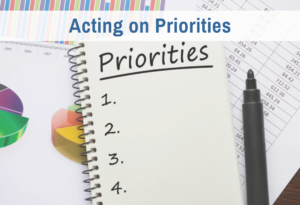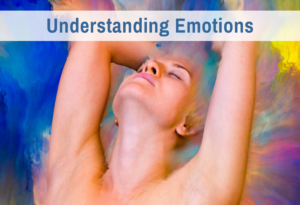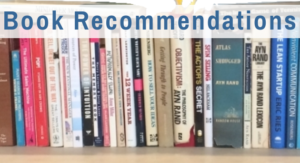In my previous article, I explained what dysfunctional states are and why you need to “reboot” your mind when you get into one. But I kept to the simple ones: overload, confusion, and blankness.
Conflict, meaning the experience of emotions pulling you in multiple directions, can also be a dysfunctional state — one that is more complex. The emotions exacerbate any overload because emotions serve to draw attention to their objects, thereby bringing more material into attention. The contradictory nature of conflict creates confusion because it triggers questions such as, “What should I do?” and “Did I make a mistake?” Because of the emotional quality of conflict, you will be unlikely to hear answers to some of your questions even if you focus on them one at a time. This is because the source of the emotions may not be in awareness. Until you introspect to identify and make explicit the implicit value judgment that caused the emotions, you are literally not aware of the source of the conflict, and therefore you cannot answer questions about it.
The nature of conflict
Conflict (i.e., emotional conflict) is a state in which you experience contradictory impulses for action.
An emotional impulse will be generated whenever you are aware of an apparent need for action. Sometimes the awareness is the result of a self-aware, logical process. For example, you look at your calendar and realize that a certain report needs to be done today because there is no other opportunity to work on it before the deadline. This conscious realization triggers desire or fear (depending on other factors) and a sense of urgency to do the report.
On the other hand, sometimes the awareness of a need for action is caused by an automatic recognition process. Recognition does not involve self-awareness. Rather, it is a direct product of the memory system. If you’ve seen a situation before, you have a direct memory that will generate an emotion without any need for self-awareness. For example, suppose that before you realized you needed to work on that report today, you had planned to work on a pet project. Suppose again that many times in the past, you had put off working on that project in favor of some urgent task and you had regretted it later. You will automatically recognize this situation as similar and expect to regret it. That automatically triggers an emotion, probably shame plus aversion, which will pull you away from starting either of them.
Whether the expectations are caused by a logical process or a recognition process, conflict indicates that you have two contradictory expectations regarding what would be good for you to do.
Conflict is often evidence that more thinking is required to determine what is in your best interest. It becomes dysfunctional if you are temporarily paralyzed or diverted by intense emotions that conflict with your current conclusion about what you should do.
When you need to address conflict
It is proper to simply ignore emotional conflict when it was predicted in advance and is low intensity. For example, if you’re just starting a project and it seems big and overwhelming when you think about it, you can predict with confidence that you will feel some resistance to starting. You expect that it will take a little intentional effort to warm up the context and get over that first hump to do the first in-depth thinking on it. Once you’ve warmed up the context, the thinking should flow. You should get some momentum, and it shouldn’t take undue effort to keep going. If you can’t get over the hump, then there is some motivational factor other than what you considered.
My usual rule of thumb is to devote 10 minutes for “getting over the hump.” I should be in the flow by then. However, in special cases where I have previously identified a defense value or an anti-value that is wildly distorting my motivation, I commit to a longer “dread sprint.” For a “dread sprint,” I commit to continuously exerting the effort to get over hump after hump for up to 2 hours (which I think is the absolute maximum). I do this in order to accelerate the integration of rational values in this area, which is how motivation distorted by anti-values and defense values is repaired.
Even with these practices, it’s possible to hit a wall of resistance and become paralyzed before the time limit. If you hit a wall of resistance, that is evidence that there is some motivational factor other than what you considered.
In other words, the problem with these cases of continuing and/or intense conflict is that you have just become uncertain about your purpose. You may have just logically concluded what you should do. Your conclusion may have appeared certain for a moment, but if the conflict or its intensity is unexpected, there is new information that has not been factored into your conclusion.
You can see how important it is to monitor for conflict. If you get unexpected conflict, you know that there is some material in your memory banks that is inconsistent with the action you intend. It is then logical to revisit your decision because you need to factor all of your values into your decision to act.
How to reboot your mind to address conflict
The ideal way to address conflict is to conclude with certainty that one action is better than the others. This resolves the conflict.
Resolving conflict is always possible in principle, in the sense that there are no necessary conflicts of interest within a person’s soul. Contra Freud and his ilk, there is no built-in contradictory motivation. All of man’s built-in motivation involves biological needs, which all contribute to the biological goal of sustaining the life of the organism. Moreover, as Ayn Rand has shown, if you adopt man’s life qua rational, thinking, reasoning man as your standard of moral value, there is no necessary conflict among your chosen goals and values.
But resolving a conflict requires thinking. And intense conflict is a dysfunctional state. This means that you urgently need to break out of that dysfunctional state by addressing the conflict in some way.
The general way to reboot your mind is to pause, reduce any overload by offloading the ideas to paper, and then give yourself an easier assignment that logically can help you achieve your purpose. For conflict, the best easier assignment you can give yourself is, “Give the contrary motivation a fair hearing.” You give voice to the ideas on both sides of the conflict. This will be easy for any emotions that were triggered by a conscious thought process. Any emotions that were triggered by an emotional recognition process will take a bit more work. You need to introspect them all the way down to understanding the rational values at their deepest root, apart from any distortions or mistakes. (Or, in rare cases, you may realize they represent in part a desire for destruction.)
It is not a fair hearing if you explain the contrary motivation with some self-criticism such as, “I’m just lazy,” or “I have a problem with procrastination,” or “I have a defense value.” You do not give that side a fair hearing unless you give yourself the benefit of the doubt and listen to all of the evidence. Usually, that means you need to explain the emotions with deep rational values.
Once you have given contrary motivation a fair hearing, it is common to be able to see which side has the biggest value to gain right now. You can then make a decision that resolves the conflict.
What if it takes too long?
Unfortunately, the world does not stop for you to resolve underlying conflicts. How do you get the certainty to act in a timely way when you know that you have an unresolved conflict? Or when you know that you have stored information that contradicts your conclusion about what is good to do?
Stopping to think until you resolve the conflict, no matter how long it takes, is not a rational option. This, which I call “overthinking,” implicitly sets conflict resolution as the only goal. “Overthinking” is what gives thinking a bad name. It paralyzes action, including urgent action. As you are trying to resolve one issue, new issues arise. Because you spend too much time trying to decide where to start work, you use up all of your time for working. You get nothing done. This creates new sources of conflict. “Overthinking” is the cause of perfectionism and all of its compulsive behavior and disastrous consequences.
What I teach is to find certainty to act despite the known unknowns. You need to take action that you can logically conclude is in your best interest — but take it in such a way that any identified conflicts will be resolved as part of the process.
So, for example, a “dread sprint” is partly designed to reveal and resolve smaller conflicts that hold in place mistaken motivation.
So, for example, warming up the context activates missing information.
So, for example, doing a first draft gives you a chance to catch big problems sooner rather than later.
So, for example, taking an experimental step reveals new information.
I have worked out a general solution, which I call “self-direction.” It is both the logical and the practical solution, but that doesn’t mean it’s obvious how to do it. If you want to learn, there is a 12-class course in the Thinking Lab.








0 Comments